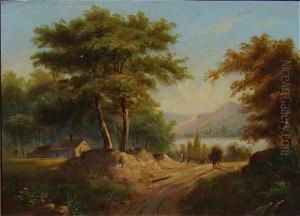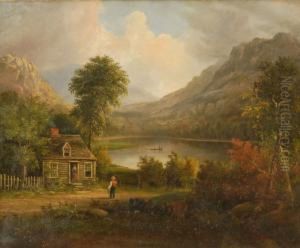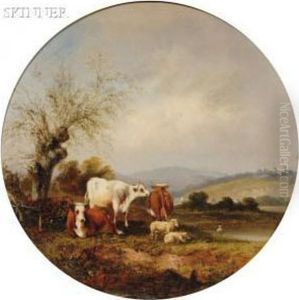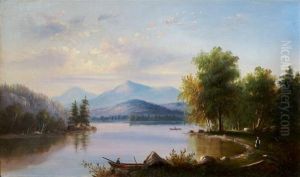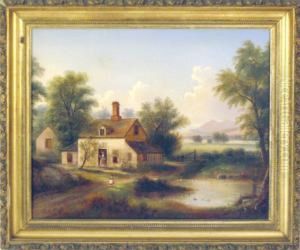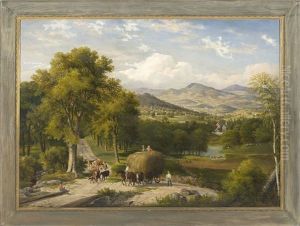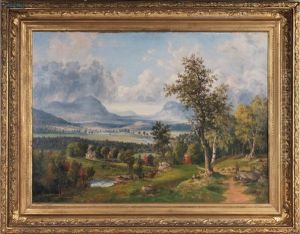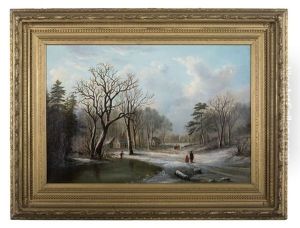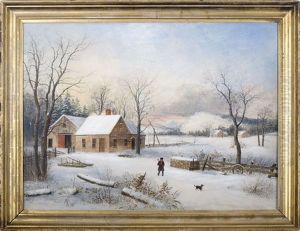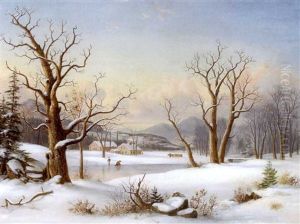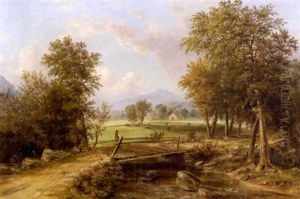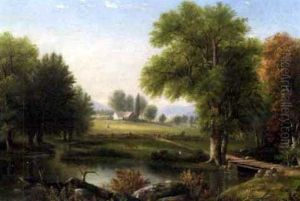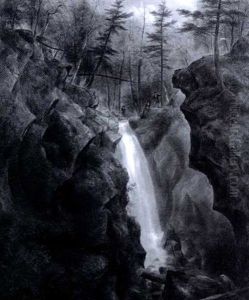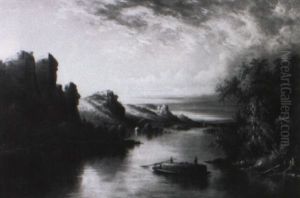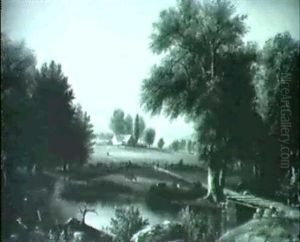William H. Titcomb Paintings
William Holt Yates Titcomb, born in 1858 in Towcester, Northamptonshire, England, was a notable British artist whose career spanned the late 19th and early 20th centuries. He grew up in a culturally rich environment; his father, Rev. Ephraim Titcomb, was a vicar and an amateur artist, which likely influenced William's early interest in art. The family moved to Bristol during William's childhood, where he would later study art at the Bristol School of Art. His talent and dedication to his craft soon led him to further his studies at the Royal Academy Schools in London, a prestigious institution that nurtured many of the era's leading artists.
Titcomb's artistry was diverse, encompassing both oil paintings and watercolors, and he showed a particular affinity for landscapes, portraits, and genre scenes. His style, characterized by meticulous attention to detail and a vibrant use of color, captured the essence of the British countryside as well as scenes from his travels abroad. Titcomb was part of the Newlyn School, a group of artists based in Cornwall, known for their realistic and often en plein air (outdoor) paintings, which depicted everyday life with a remarkable sense of realism and emotional depth.
Throughout his career, William H. Titcomb was an active participant in the British art scene. He exhibited regularly at the Royal Academy, the Royal Society of British Artists, and the Royal Institute of Painters in Water Colours, among others. His works were well received by both critics and the public, and he garnered a reputation as a skilled painter of his generation.
Beyond his artistic achievements, Titcomb also contributed to the cultural landscape of his time by being involved in various art organizations. He was a member of the Royal West of England Academy, serving as its president from 1922 until 1929. This role underscored his significance in the Bristol and wider British art community, allowing him to influence the development of art in the region significantly.
William H. Titcomb continued to paint and be an active member of the art community until his death in 1930. His legacy is preserved through his artworks, which remain in private collections and museums, showcasing the enduring appeal of his detailed and vibrant portrayals of both the natural world and human character. His contribution to the British art scene of his time is remembered for its technical skill, emotional depth, and the vivid capture of everyday life.
